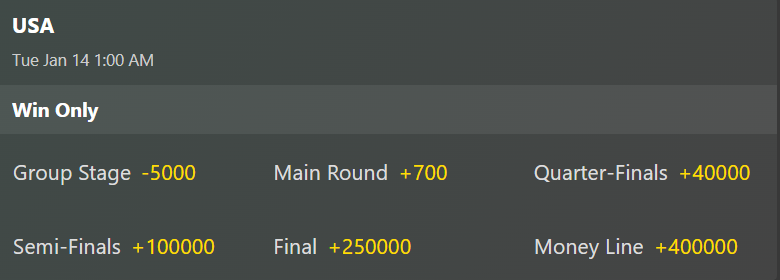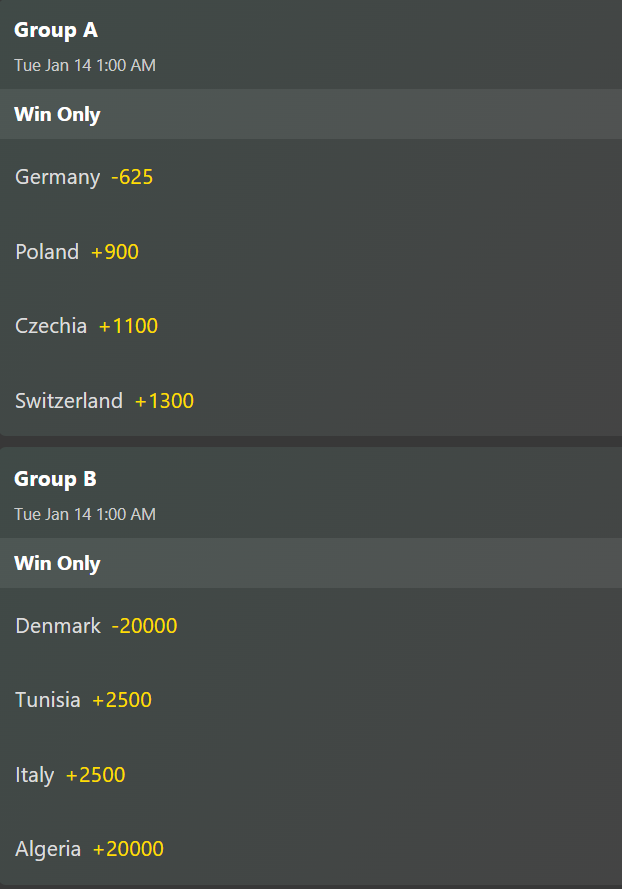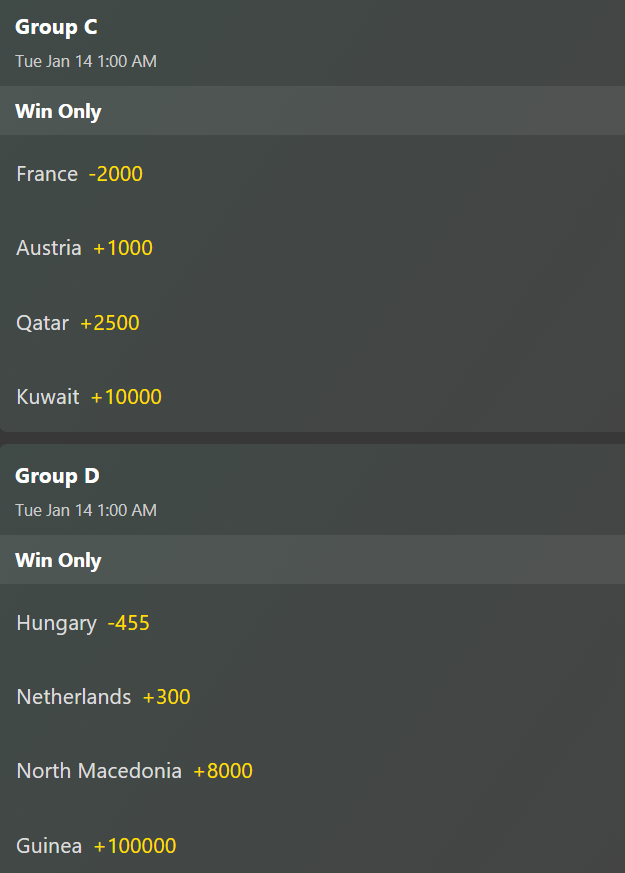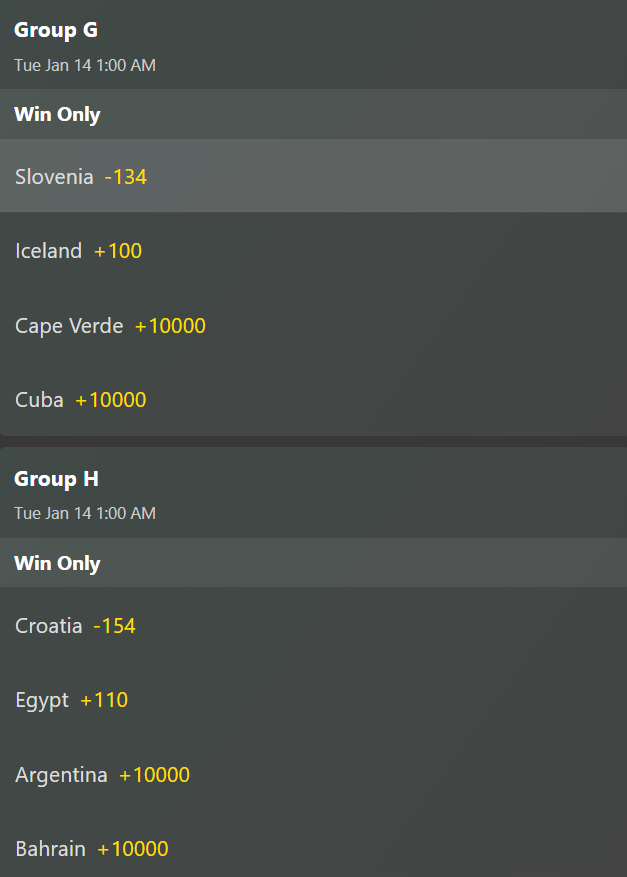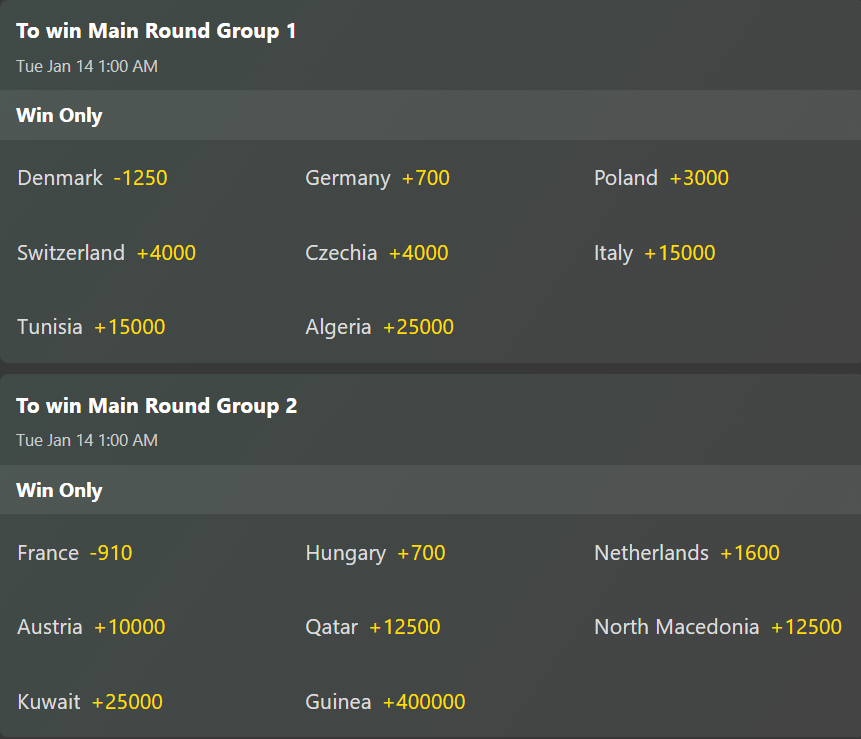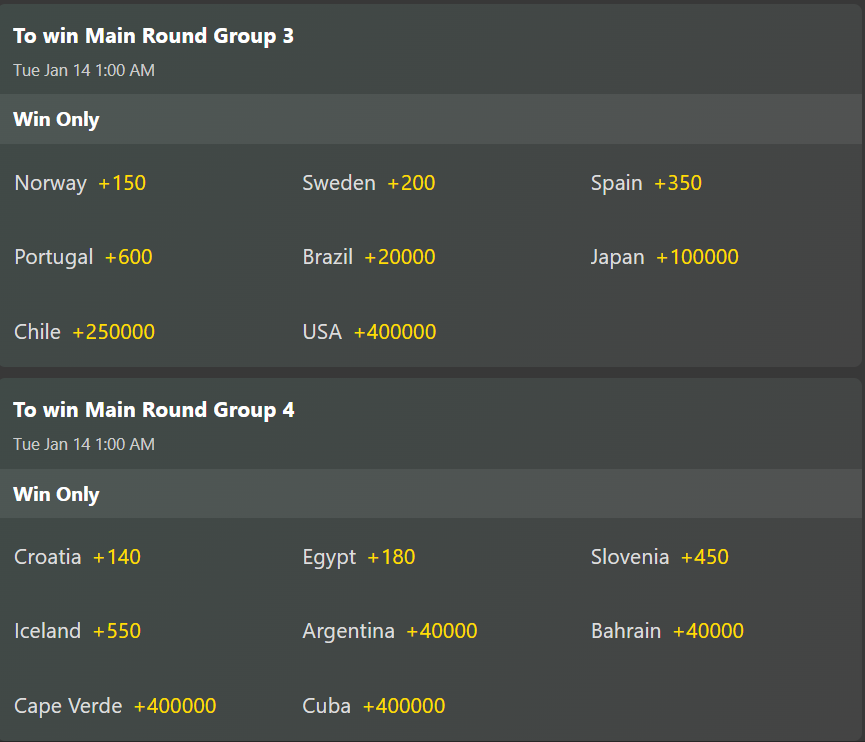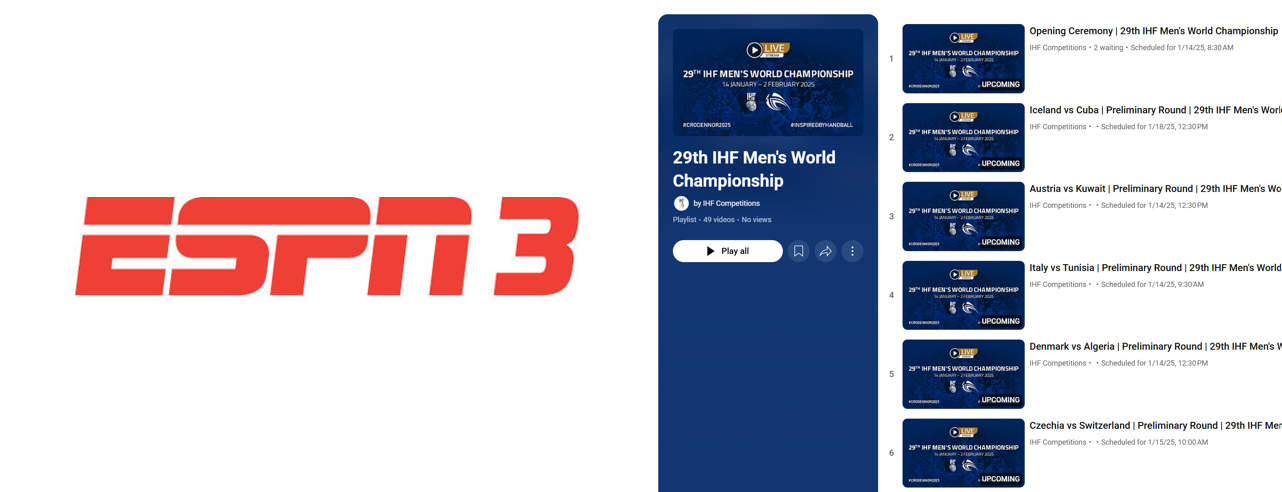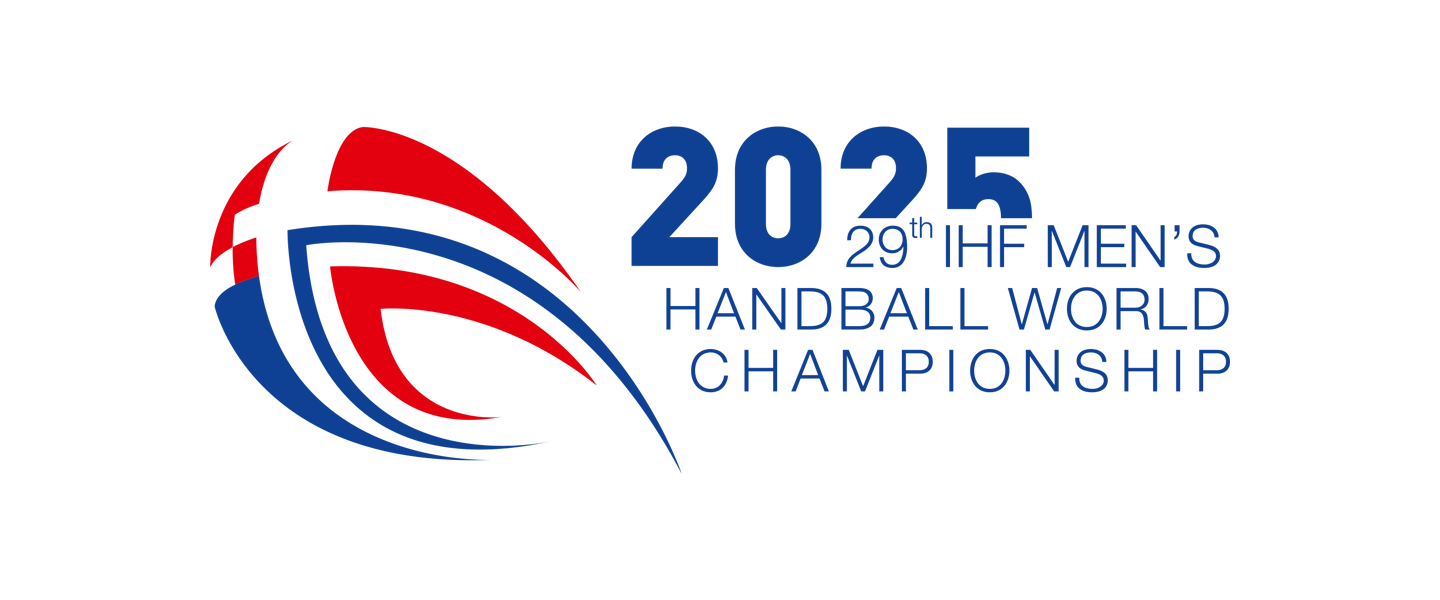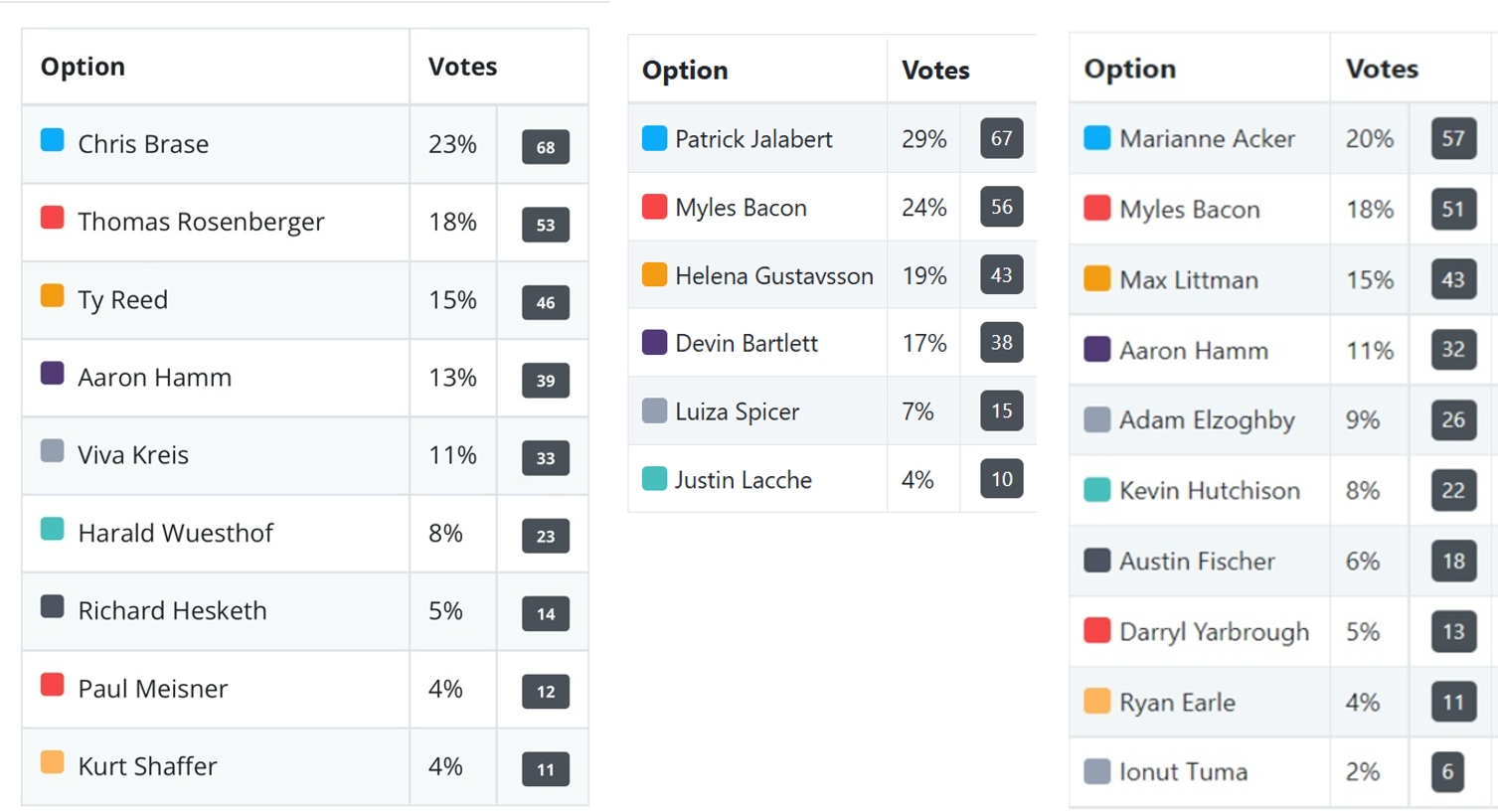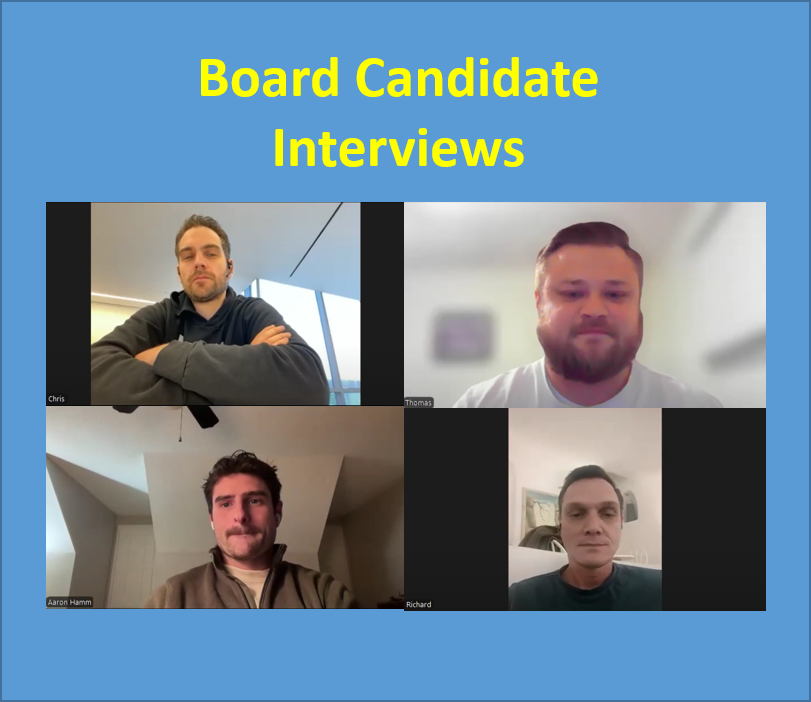(Odds for Team USA to make the Main Round and other stages of the World Championships)
Before it starts here’s a look at the Futures betting market for the 2025 IHF Men’s Handball World Championships. (All odds are courtesy of Bet365: Link)
Preliminary Group Odds
There are 8 Preliminary Groups with 4 sides in each group. Here are the odds for each team to win their group.
- Group A: Who’s going to win the President’s Cup? With four European sides (GER, POL, CZE, and SUI) battling for three main round slots, the odd man out will likely be the favorite to win the consolation President’s Cup tournament. I’m thinking Czechia will get that honor.
- Groups A-E: A mini PANAM Games in Porec?: Based on the odds, there’s a decent chance that Argentina, Chile, USA and Cuba could all end up in 4th place. This would create a miniature PANAM Games Group II in the President’s Cup.
- Group E: Value Pick: At 100-1 odds I made a small wager on Brazil to win Group E. Having seen Brazil give Germany a battle in two recent friendlies there’s nothing to say they can’t do the same thing against two good teams (Norway and Portugal) a rung below Germany. And, not just “battle,” but pull off a couple of upsets. Of course, Brazil being Brazil… they could also implode. Even lose to a scrappy USA side. But, 100-1 odds… I’ll take that.
Can Team USA Make the Main Round?
Two years ago, Team USA beat Algeria to make the Main Round. This was a nice accomplishment, so I’ve been getting asked a lot as to whether the U.S. can again make it out of the Main Round. Unfortunately, the U.S. is in a much tougher group and barring an incredibly unlikely implosion by the hosts, Norway and newly established top side Portugal, this essentially boils down to the U.S. upsetting Brazil. Brazil has consistently beaten the US for 25+ years, but in recent years the U.S. has managed to play them close for a half, but not for a full 60 minutes. So, it’s conceivable to think of an upset, but what are the odds?
Among the different odds available at Bet365 is the option to bet at what stage a team will be be eliminated. While there are odds for the U.S. to make the quarterfinals, semifinals, finals or win it all those are very unrealistic sucker bets. Realistically, the U.S. has only two outcomes: bowing out in preliminary group play or making the main round. The odds for those are listed as -5000 (1-50) and +700 (7-1). However, since sports books shift the odds to make a profit those aren’t actually the true odds. To get a better picture of the true odds we need to look at Brazil’s odds and split the middle. With Brazil listed as -1400 (1-14) to make the Main Round a rough assessment is that the oddsmaker think the U.S. is about -1100 or 11-1 to make the main round. Or, in percentage terms around 8%.
Main Round Groups
After the Preliminary Round Groups A-B, C-D, E-F and G-H will merge into four Main Round Groups with the top two in each Group advancing to the Main Round. Also of note, the quarterfinal match ups will pair up Groups 1 and 3 for half of the bracket, while Groups 2 and 4 will pair up for the other half of the bracket.
- Two Groups with two big favorites: Denmark and France: Groups 1 and 2 have Denmark and France as the overwhelming favorites to win their resective groups. Lots of matches to be played, but that seems right.
- Two Groups projected as dogfights: In contrast to Group 1 and 2 there are no clear favorites for Groups 3 and 4. And each of those groups have 4 sides with pretty realistic chances to finish in the top two. This should result in some compelling matches
Odds to Win the Title

In the end… it’s projected to be France vs Denmark. We shall see, however. As the Olympics showed with Germany bouncing France out in the quarterfinals the odds are just the odds.
